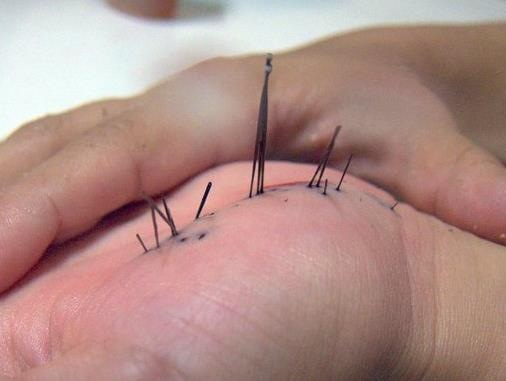A sea urchin is not going to attack you on purpose, however, they do have venomous spines that will cause reactions. Sea urchins are not aggressive creatures and move at extremely slow speeds; however, divers often get pierced by these creatures because they accidently brush up against them or step on them. The large spines are not venomous; it’s the small spines called pedicellaria lie in between the large spines that will inject venom when they puncture your skin.
Where Are Sea Urchins Usually Found?
It is very common to hear about sea urchin injuries because sea urchins are found everywhere.
1. Sea urchins are found on the shoreline. One of the favorite habitats of the sea urchin is that of the shallow, rocky, sandy shoreline. Extra care needs to be taken by shore divers as the shallow water makes it easy to step on a sea urchin as they love to bury themselves in the sand.
2. Sea urchins are found in coral reefs. During the day they will hide in the crevices within the coral. At night they float out to feed on algae exposing them to night time divers. Night divers should take extra caution not to accidently brush against a sea urchin.
What Effects Will a Sea Urchin Sting Cause?

1. When you are punctured by a sea urchin, the first symptom you will notice is intense pain at the entry wound. If your skin is punctured by one of the venomous spikes, you may experience a severe, burning sensation for several hours, swelling, bleeding or temporary numbness.
2. You may also experience nausea, vomiting, muscle paralysis, low blood pressure and weakness in your body. More severe experiences can range in degree from respiratory distress to unconsciousness. There are rare times when the punctures are fatal.
3. After about 6 hours, most effects of the sea urchin’s sting will subside. However, there are some long term effects that may result if the spines are not removed from the wound. These effects range from discomfort to arthritis, bursitis, and tenosynovitis. Sometimes surgery is necessary to remove the spines if you suffer from these effects.
What to Do If You Get a Sea Urchin Sting
Most stings will heal on their own. The process can take months, however there is a process you can use to help the healing process. The most important thing to do is watch for infection, when infection occurs it is time to seek professional help.
Here are the step you can take to help your recovery:
- Remove large spines. You want to remove any spine fragments from the stung area as soon as possible. You can use tweezers to pull the protruding ends.
- Shave small spines. After you have removed the large spines, you can remove the pedicellaria by using shaving cream and a razor.
- Clean with soap and water. Be sure that you have removed all the protruding spines and clean thoroughly with soap and water. Use fresh water and soap to completely scrub the area. Flush with fresh water several times.
- Immerse in hot water. Immerse the stung area in water as hot as you can handle. This will help ease the pain. Add a bit of Epsom salt or other magnesium sulfate compound to the water to help the remaining spines dissolve. Repeat this step when pain recurs.
- Keep open. Do not cover with bandages or close the wound with stitches. Keeping the wound open allows the embedded spines to work their way out.
- Apply topical antibiotics. When redness, swelling or other signs of infection occur, apply a layer of topical antibiotic. If the infection persists, a physician may need to prescribe a stronger antibiotic.
- Acetaminophen or ibuprofen. Use as instructed to relieve pain.
When to See a Doctor
Always take special care in watching for infection over the few days following the sea urchin sting. If you do notice an infection or if you notice some spines are extremely deep, it is important that you visit a doctor right away. It is also important to seek out the help of a trained physician if you begin to notice necrosis, skin rash, bacterial infections, and shortness of breath or pain when breathing. The physician will be able to help remove the deep spines safely and prescribe appropriate medications to help with infections.
What Can You Do to Avoid Sea Urchin Sting?
When diving in an area that is known to have sea urchins, the best thing you can do is maintain an awareness of your surroundings. Wearing appropriate diving gear such as thick-soled booties, gloves and a thick wetsuit will provide protection as well.
Always control buoyancy around coral so that you do not bump into a hidden sea urchin. Also be aware of spines in the sand as they will bury themselves. Most stings occur when a diver stops paying attention and chases after that perfect photo op; they become distracted and accidently touch a sea urchin.If you know the area has an extremely high number of sea urchins, pick a new dive site.
